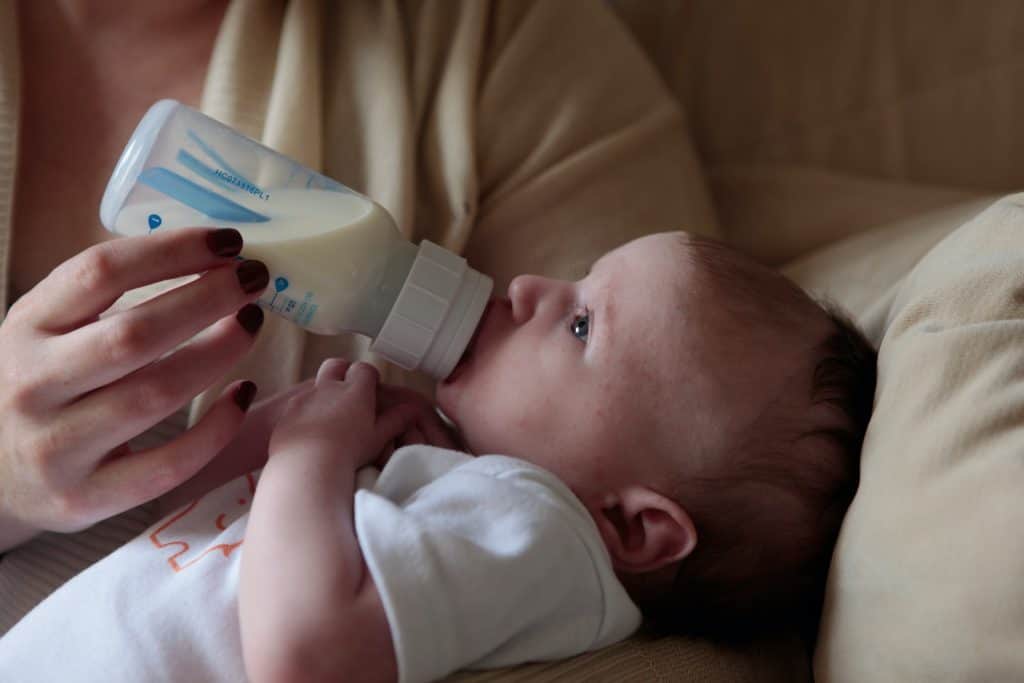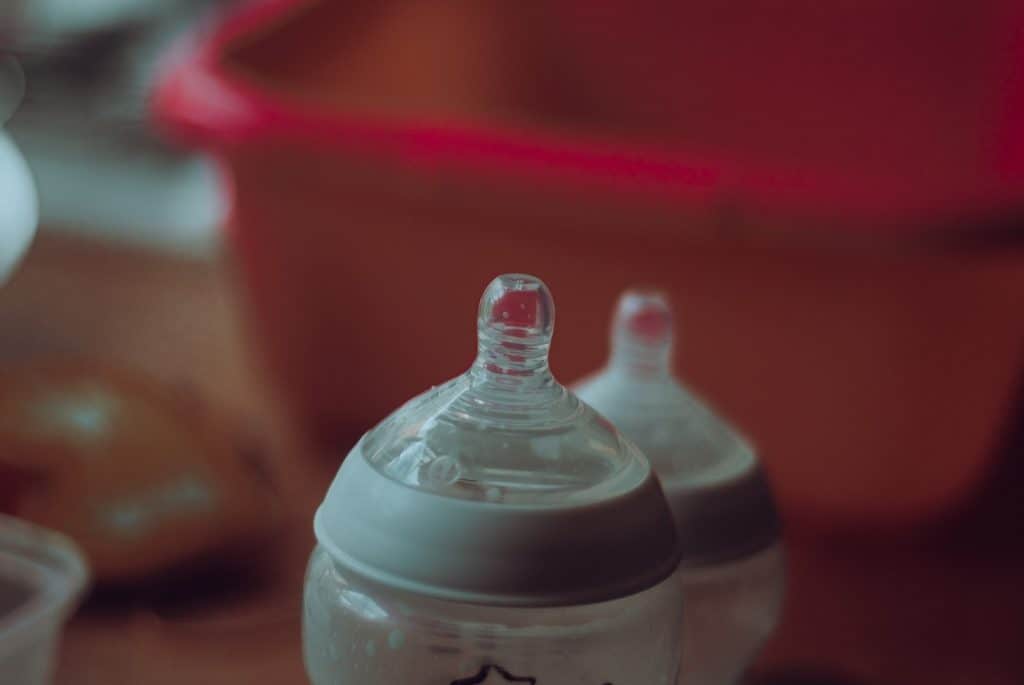In the process of cleaning baby bottles, you’ll find that different materials may need different care. For instance, while some baby bottles are dishwasher safe for your convenience, others might require a more hands-on approach. Whether you’re using a bottle brush for a thorough scrub, rinsing with hot water, or depending on the heated drying cycle of your dishwasher, proper cleaning techniques are vital.
How to clean baby bottles? Using the right tools, such as a quality bottle brush, and the right washing techniques helps ensure all bottle parts — including the often forgotten bottle nipples — are left sparkling clean. Drying items on a bottle drying rack can minimize the risk of picking up fresh germs from a dish towel and help avoid any unwelcome soapy water residue. Always prioritize safety and health when washing baby bottles; your baby’s immune system will thank you!
Understanding the Importance of Clean Baby Bottles

Wondering why it’s so crucial to ensure clean baby bottles for your little one? Let’s break down the reasons and provide a bit of clarity on this topic.
Baby bottles are your baby’s kitchen utensils, but unlike adults, babies have yet to develop a fully functioning immune system. This makes it incredibly important to keep bottles as clean and germ-free as possible to avoid unnecessary illnesses. If your baby has a weakened immune system or was born prematurely, the need for sanitizing baby bottles becomes even more crucial.
When you feed your baby with a bottle, it’s not just milk they’re getting. Unwanted bacteria can also make its way into your little one’s meal if the bottle isn’t clean. These harmful germs may derive from the leftover residue from previous feeds, microorganisms in the air, or even the tiny particles from your hands introduced whilst preparing the feed.
The American Academy of Pediatrics states that if your infant is younger than three months, was born prematurely, or has a weakened immune system, it’s essential to sterilize the bottles until their immune system is stronger. This way, you take an extra step to destroy any lingering potential pathogens, ensuring the safety of your precious one.
Regularly washing baby bottles reduces the chances of mold and yeast growth, which feast on the sugary residue from the formula or breast milk left in the bottles, leading to infections that could harm your baby’s health.
Furthermore, learning how to clean baby bottles properly also plays a pivotal role in maintaining the quality of the bottles and their parts. Cleaning keeps the nipples from degrading, preventing any small parts from breaking off and becoming a choking hazard. Plus, a clean bottle reduces the chances you’ll have to deal with pesky complications, such as residue buildup causing flow issues or air bubbles causing discomfort to your baby.
In summary, sterilizing bottles and maintaining bottle hygiene is more than just about keeping your bottles looking clean. It’s vital to your baby’s health, immune system reinforcement, and comfort during the feeding process. Learn how to wash and sterilize baby bottles correctly to ensure your baby gets the best nourishment possible.
Step-by-Step Guide on How to Clean Baby Bottles

Cleaning your baby bottles might seem like a daunting task, but fear not. It’s easier than you might think if you follow these expert steps.
First off, remember to wash your hands thoroughly before handling your baby’s bottles to avoid transferring germs. Begin the process by disassembling the bottle parts. That includes detachables like the nipple, cap, and ring.
Next, rinse the bottle parts under running water. Pay special attention to the nipple, using hot water to remove any clogged milk. Don’t overlook the importance of this; failing to clean these parts thoroughly could lead to your baby ingesting old milk or formula residue.
Once you’ve rinsed the parts, it’s time to scrub. Use a bottle brush dedicated only to washing baby bottles. A nipple brush would also come in handy for thoroughly scrubbing the smaller parts. Make sure you’re using a brush that can reach all areas inside the baby bottle to ensure an efficient clean. Clean the bottle in warm, soapy water to clear away any remaining residues.
Following a good scrub, rinse the baby bottles and parts with clear water to get rid of the soapy residue. After rinsing, it’s vital to sterilize or sanitize the bottles, for baby’s with a weakened immune system this is particularly important. But even if your child was not born prematurely or doesn’t have a weakened immune system, sterilizing bottles can help keep harmful bacteria at bay. You can do this using a baby bottle sterilizer, a clean pot with boiling water, or by using a dishwasher if the bottles are labeled as dishwasher safe.
Air drying is the next crucial step when learning how to clean baby bottles. Ensure the bottles are placed on a clean dish towel or bottle drying rack to air dry completely. Using a towel to dry can leave fibers on the bottle, so air drying is the safest option.
To cap it off, remember that cleaning baby bottles demands consistency. It’s best practice to clean the bottles after each use. Occasionally, you’ll need to deep-clean them. This process might include soaking the bottles in a basin with hot water and dish soap, or a heated drying cycle in your dishwasher for extra germ removal.
Just follow these steps, and you’ll not only know how to clean baby bottles, but you’ll be a pro in no time! Keep those bottles clean and enjoy feeding your baby without worries.
Tips on Sterilizing Your Baby’s Bottles

To keep your little one safe and healthy, knowing how to clean baby bottles properly is a must. Sterilizing baby bottles is a key part of the process, so here are some helpful tips for you.
Let’s start with when you should sterilize bottles. Most healthcare professionals agree that new bottles should be sterilized before their first use. After that, they recommend frequent sterilization during the baby’s first year, especially if your baby was born prematurely or has a weakened immune system.
When it comes to sterilizing, there are a few methods you can use:
- Boiling water: This is the traditional method of sterilizing bottles. Simply submerge all the bottle parts in a pot of boiling water for at least five minutes. But remember to handle the hot items carefully to avoid burns.
- Bottle sterilizer: If you prefer an easier solution, consider getting a bottle sterilizer. These devices use steam to kill harmful germs, and some even have a drying cycle.
- Microwave steam sterilizer bags: These are also a convenient option. Just like the bottle sterilizer, it uses steam, but in this method, you can use your microwave.
- Dishwasher: Many of today’s baby bottles and parts are dishwasher-safe. If you choose to go this route, place the items on the top rack and use the heated drying cycle if your dishwasher has this feature.
After sterilizing, let the bottles air dry completely on a clean dish towel or a bottle drying rack. Avoid using a dish towel to dry them as this could introduce new bacteria.
It’s also important to know when you can stop sterilizing baby bottles. After your baby’s first year, they should have a stronger immune system that can handle some exposure to bacteria. However, continue to wash the bottles in hot soapy water after each use.
Remember, sterilizing is just for extra germ removal. Washing bottles should be done frequently and may involve the use of a bottle brush and dish soap. The use of warm water can also aid in removing any soapy residue before the sterilization process.
Be sure to keep up with the cleaning of baby bottles as part of your regular routine to ensure your little one stays healthy and happy. Proper cleaning and sterilizing are key to preventing bacteria and diseases. Stay diligent in maintaining the cleanliness of your baby feeding items and let your baby enjoy a safe and clean feeding experience.
Final Thoughts: Maintaining Bottle Hygiene for Baby’s Health
In your journey of parenting, knowing how to clean baby bottles properly is a vital skill that can save you from lots of worries. It’s not just around ensuring your little one’s bottles are spotless; it’s about protecting their health, too. Sterilising and washing baby bottles should be a routine part of your child care regimen, especially during their first year of life.
A good bottle brush can be your best friend to get this task done, as it can reach into the corners where residuals may lurk. Using hot water and dish soap to wash baby bottles can eliminate most of the harmful germs. Don’t forget to thoroughly rinse the bottles afterwards to ensure no soapy residue left.
Deciding when to stop sterilizing baby bottles can vary depending on your baby’s health. If your baby has a weakened immune system or was born prematurely, baby’s bottles may need to be sterilized for a longer period. It’s always best to talk to a healthcare professional about this if you have any concerns.
Using items like a bottle sterilizer or microwave steam sterilizer, you can increase your bottle cleanliness assurance. These tools use hot steam to kill any lurking bacteria and viruses. For routine sanitizing, a dishwasher with heated drying cycle often has an integrated sanitizing setting that is effective for sterilizing bottles.
Should you choose the boiling water method, make sure all the bottle parts are completely submerged and boil for at least five minutes. This method helps in sanitizing baby bottles effectively by killing harmful bacteria that might be dwelling on your baby’s feeding items.
Lastly, after washing and sterilizing, have a designated clean area to air dry the bottles. Air bubbles can harbor bacteria, so allowing the parts to air-dry completely can help eliminate this risk. Bottle-drying racks can make this process tidier and more convenient.
Maintaining bottle hygiene isn’t just about your baby’s health, it’s also about creating a safe environment for them to grow and thrive. So, always remember, a well-washed baby bottle is the first step to a healthy, happy baby.
In essence, cleaning and sterilizing baby bottles might seem a tedious task but it’s pretty manageable once you get the hang of it. Just remember, regular and thorough cleaning plays a crucial role in preventing illnesses and maintaining your baby’s robust health.
Other suggested articles:

